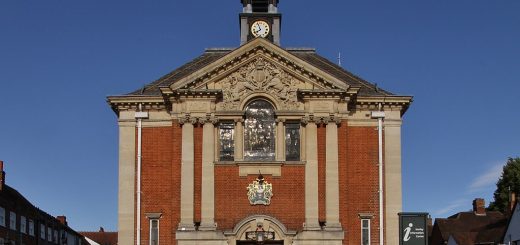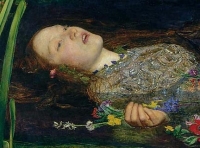How Accurate Can Folklore Articles Really Be?
After looking at at the great comment under the Red Cap article, I have to wonder how true to the original tale a lot of our folklore really is. Folk tales would be passed down by word of mouth and would change and mutate from region to region. I think the changes though are pro
After looking at at the great comment under the Red Cap article, I have to wonder how true to the original tale a lot of our folklore really is. Folk tales would be passed down by word of mouth and would change and mutate from region to region. I think the changes though are probably just as relevant and important as the tale in it’s original form.




OK, I’ll bite
I guess it depends on whether you guys consider this place to be a repository of scholarly folklore knowledge, or as a place where folklore can continue to live, or both
Folklore lives by a process of sticking all the ‘maybes’ and ‘perhaps’ together with the original grains of truth. That’s how new details get added on the basic idea or story.
If that is what you are deliberately doing, then, that’s excellent. British folklore is still alive.
If, however, you are intending to produce scholarly articles on a historical subject, then I think you should indicate what parts of the article can be sourced, and what is just speculation.
My reasons are pretty particular. If there is a source to something like the church grim theory or the werewloves in Lewis, I’d like to know what it is, especially if it is a primary source. I don’t want it so I can verify the truth, though. I want it because, as a writer of fiction, a cool primary source is going to be a lot more valuable than an entry in a list, or a bit of speclative text on a website. So, if there turns out to be some cool eyewitness accounts of the Langavat wolves, I’ll be a happy little story-writer.
Just my ten cents…
Steve.
Folklore
Good points Steve.
I think mainly the site falls into keeping folklore alive in a popular sense, rather than a scholarly exercise – however I agree that primary sources are important and the waters can get muddied by speculative writing. However there is scope for more scholarly articles in the future. We have tried to keep some element of historical interest in articles about sites before looking into ghosts stories and legends which have grown up around them, and we always welcome contact if any errors appear. Of course with ghost stories etc, a pinch of salt should always be at the ready.
Danny P.
Folklore
I think it would be valuable if possible to eventually show the pimary source and chart the changes through to the most recent versions. That would be a lot of work though. I suppose we can just show what we have available. I think this is where the comments fields and forum become invaluable in gathering information and discussing it.
Evolution of stories is
Evolution of stories is important. Storytelling is an ancient art and stories themselves mutate in the telling, like living things as they take a different form in the imagination of the listeners and something of the atmosphere of the room and the time they are told. As stoires pass down through time they are also coloured by the beliefs of the tellers as they make the stories relevant to their audience of the day. Some believe that the writing down of these myths is to crystallise them and artificially fix them. Looking at the ancient irish texts it is clear that a story can exist in many forms, and also that it has lost some of its life by being written down.
On the other hand, looking at the Irish myths as an example, you can see that stories have outlasted entire civilisations, and that writing them down is the only way to allow them to survive this: so it is necessary, and there’s a balance between recording for preservation and the telling of the original tale to allow it to evolve.
There is no true source for any story, but each should be interpreted in the light of its scribes and its tellers, and also in the light of your own experiences.
I’m aware that this might sound deeply woolly, but as well as being a storyteller I am also a scientist, honest! 🙂
While you’re here, could you have a look at what I have posted re Craig-y-Ddinas? Written down in Victorian times it combines an older mythic structure of the king under the hill with a more Victorian interpretation of mistreatment of fairy gold. I’d like to lose the latter if there are any other versions available, but out of respect to the story if I can’t find any known alternative versions I’ll have to tell it as it is…..
Happy listening.
The ATU system of
The ATU system of classifying folk tales goes a long way to showing their evolution through time.
Hmm. I have googled ATU, and
Hmm. I have googled ATU, and come up with Alternative Treatment Unit, or some sort of aerobic sewage management system….could you point me at a source for stories?
ATU
Oops, LOL.
It stands for Aarne-Thompsom-Uther folklore classification system, which evolved out of the previous Aarne-Thompson system, and is a kind of industry standard term, though there are other classifications systems around, they didn’t become as popular.
http://en.wikipedia.org/wiki/Aarne-Thompson_classification_system tells you about the systems of classification.
Googling ATU- or AT- with the classification number of the type of tale you want to know about should pop up lots of sites like the following one with those sorts of tales on them.
http://www.pitt.edu/~dash/folktexts.html
That’s really helpful, thank
That’s really helpful, thank you.
No problem
Sorry about the sewage, LOL.